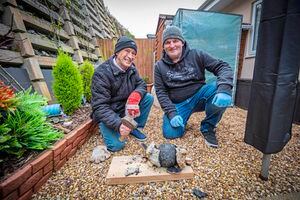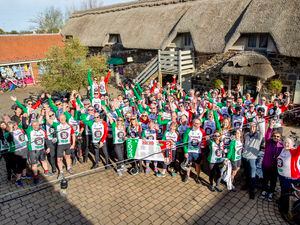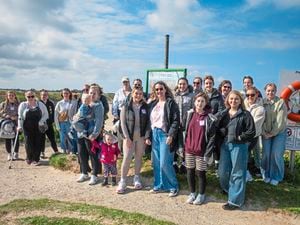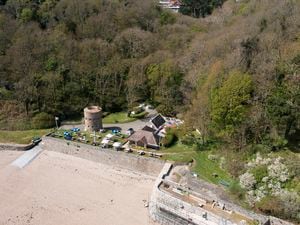Old cannonball found in Belle Greve Bay sees the light of day
A CANNONBALL saw the light of day for the first time in more than 200 years on Saturday.

Made of solid cast iron and weighing 24lb, it is believed to have been fired from the Salerie Corner battery in the late 18th to early 19th century.
It was discovered about a fortnight ago about 1,500 yards from the battery in Belle Greve Bay at a depth of about 14m by Mat Le Maitre.
A building site manager by profession, Mr Le Maitre has been diving in his spare time since 1996.
He has his own Facebook page and You Tube channel – Channel Island Diving – which enables people to enjoy the diving experience even if they cannot do it themselves.
‘It’s really just about letting people know what we get up to,’ he said.
‘We do some pretty random stuff like diving in quarries, underwater surveying, looking for lost crab pots and diving on ship wrecks.’
Following the discovery of the cannonball, Mr Le Maitre put up a competition on Facebook inviting people to guess how much ball weighed with the heavy concretion that had encased it over the years included. Richard Ellis, now retired but who spent most of his life working as a landscape gardener, came up trumps with a guess of 30lb – just 2.5ozs short of the correct figure.
‘And I know nothing about cannonballs,’ he said.
As part of Mr Ellis’ prize, Mr Le Maitre took the cannonball, complete with concretion to his home and showed him how to split the object from its natural casing.
A block of wood and couple of hammer blows later, and the cannonball was once again in the light of day.
Mr Ellis said he would now preserve it before putting it on display.
Me Le Maitre said he had found a few cannonballs over the years. It usually took a trained eye to spot such an item on the seabed as they tended to blend with the surroundings. This one was near a reef which it is known was used for target practice.
‘I can’t imagine that many people will have seen a cannonball being broken from its casing like this so I thought some might be interested to see it,’ he said.
The cannonballs could be fired at distances of up to 2,000 yards.
Some would be heated until they were red hot first in order to set fire to the wooden boat target.
There were three 24lb guns on the Salerie Battery and the remains of a furnace for heating the cannonballs can still be seen there today.





